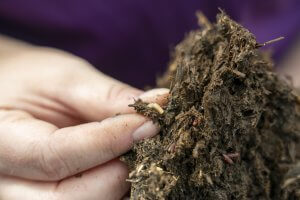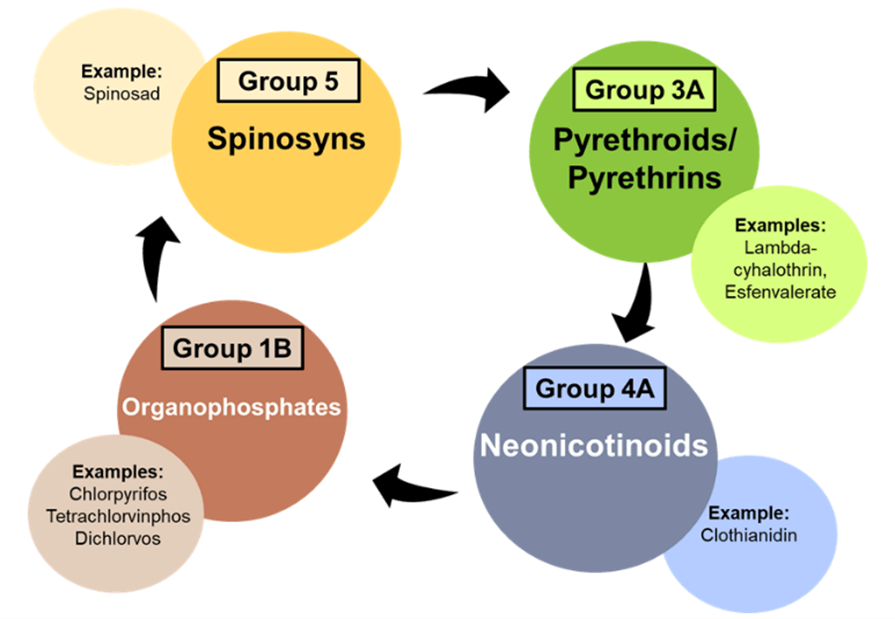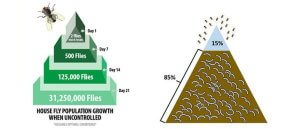With so many things happening on a farm at any given time, insect control often falls lower on the list of priorities. At least until there’s a population explosion that forces you to address the issue. Most animals can tolerate insects to a certain extent, but heavy insect populations can lead to devastating production losses. Many insects are also capable of vectoring various disease pathogens, bringing all the health problems and losses associated with those diseases, which is why it’s important to maintain an ongoing insect control program.
The Role of Integrated Pest Management
Accurate identification and having a basic knowledge of insect biology helps you target an infestation more effectively. A successful insect control program should not rely solely on insecticides, instead incorporating insecticides as one of several control methods.

This combination of insect control measures is known as integrated pest management (IPM). Measures include biological, cultural, physical and chemical management tools. IPM involves regular assessments to determine if insect populations are at acceptable levels or if additional actions are needed for control.
Understanding Modes of Action and Rotation
When insecticides are necessary there are several formulations and active ingredients available in the market, so it can be difficult to know which product to choose and how best to use it. Insecticides are classified based on their mode of action (MoA), or how the active ingredient works to kill an insect. Relying on a single mode of action for extended periods can lead to resistance. As insects develop resistance to an active ingredient, the product may appear less effective as tolerant insects survive. By using multiple modes of action in rotation or combination, we can combat the development of resistance.
When rotating products you need to make sure you’re switching to different chemical classes by checking the active ingredients in those products. For example, esfenvalerate is a group 3A insecticide, or pyrethroid. Switching from esfenvalerate to a product containing lambda-cyhalothrin will not give you that rotation benefit, because both active ingredients are classified as group 3A. They have the same mode of action despite being different ingredients. Switching from esfenvalerate to clothianidin is a rotation from pyrethroids to neonicotinoids or group 3A to group 4A. Many insecticides work against the nervous system of insects. Visually, the results may look the same, but you’re targeting different areas in that nerve cell and combatting resistance when you rotate your mode of action.

Enhancing Control with Insect Growth Regulators
Insect growth regulators (IGRs) are insecticides that interfere with insect growth and development. When exposed to IGRs, immature insects will not develop correctly into reproductive adults. Because IGRs have the greatest impact on immature insects, you need to apply these products where immature insects are going to be found.
Many insecticides and application methods target adult insects, yet for flies, approximately 85% of the population is in the immature stage. When you combine adulticides with insect growth regulators, you’re targeting the entire fly population, not just the adult stage.

Long-Term Insect Control
To get the most out of your insecticide program, continue monitoring insect activity after each application and adjust your approach based on what you observe. Focus on maintaining a balanced strategy that combines rigorous sanitation, timely application and the use of multiple insecticide classes to combat resistance development. By taking a proactive, integrated approach, you’ll improve long-term control, protect animal health and reduce costly infestations before they impact your bottom line.
If you would like help fine-tuning your insect control plan connect with MGK’s team for expert advice tailored to your operation.

